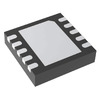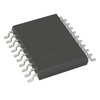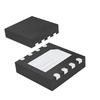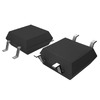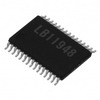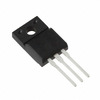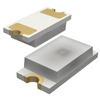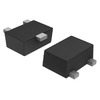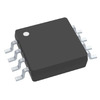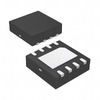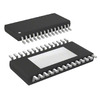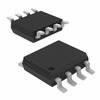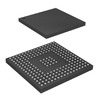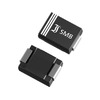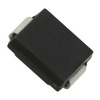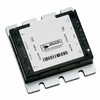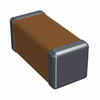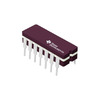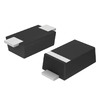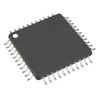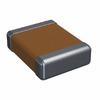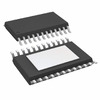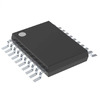The Ultimate 6N137 Optocoupler Guide for Beginners
The 6N137 optocoupler helps connect two separate circuits safely and quickly, making it ideal for data transfer and noise reduction in electronic systems. This article will guide you through its features, uses, and how it works.Catalog
[IMAGE OF 6N137]
6N137 Overview
The 6N137 is a compact optocoupler, designed with an infrared LED linked to a high-speed photodetector logic gate. It works effectively to provide electrical isolation between input and output while ensuring quick response times. With an 8-pin DIP package, the 6N137 supports both through-hole and surface-mount configurations, making it versatile for different types of circuit board layouts. This component is built for high-speed data transmission and protection against electrical noise, offering reliability for a range of uses in microprocessor systems and communication interfaces.
6N137 Pin Configuration
[IMAGE OF 6N137 Pin Configuration]
6N137 CAD Model
6N137 Symbol
[IMAGE OF 6N137 Symbol]
6N137 Footprint
[IMAGE OF 6N137 Footprint]
6N137 3D Model
[IMAGE OF 6N137 3D Model]
6N137 Key Features
High-Speed Data Transfer
The 6N137 offers fast data transfer at speeds of up to 10 Mbps. This makes it suitable for applications where quick communication is essential, ensuring efficient performance in systems that need to handle high-speed signals.
Excellent Noise Immunity
With a common mode transient immunity of 10 kV/µs, the 6N137 effectively reduces noise interference. This is especially useful in environments with frequent electrical noise, helping maintain reliable data transmission.
Wide Operating Temperature Range
The 6N137 operates reliably in temperatures ranging from -40°C to 85°C. This allows it to function well in both cold and warm conditions, giving flexibility to your designs and making it adaptable to various environments.
Logic Gate Output
Equipped with a logic gate output, the 6N137 can easily interface with digital circuits. This feature ensures compatibility with common logic families, making it easier to integrate into different systems.
High Isolation Voltage
The 6N137 provides an isolation voltage of 5000 VRMS, adding a layer of protection between input and output. This feature helps protect sensitive components from potential electrical surges, enhancing overall safety.
Compliance with Environmental Standards
Being RoHS-compliant and lead-free, the 6N137 meets environmental and safety standards. This compliance makes it a better choice for sustainable projects and ensures it’s safe to use in various applications.
6N137 Specifications
Technical specifications, features, characteristics, and components with comparable specifications of Everlight Electronics Co Ltd 6N137
[TABLE OF Specifications]
6N137 Common Applications
Ground Loop Elimination
The 6N137 is commonly used to eliminate ground loops in circuits. By providing isolation between input and output, it helps prevent unwanted signals from disrupting communication, which is especially helpful in sensitive electronic setups.
Data Transmission
In applications where data needs to be transferred quickly and securely, the 6N137 plays a vital role. Its high-speed capabilities make it suitable for reliable data transmission, ensuring that information is accurately communicated between devices.
Line Receivers
The 6N137 is often employed as a line receiver, facilitating clean signal reception from long cables or connections. This use is practical in systems where signals must travel over distances without degradation.
Switching Power Supplies
In switching power supplies, the 6N137 provides isolation between control and output stages. This keeps the power circuit protected from potential disruptions and enhances the stability of the overall power supply design.
Computer Peripheral Interfaces
For computer systems, the 6N137 can serve as an interface between different components, such as peripherals. Its ability to prevent interference ensures seamless communication, which is essential for systems where reliability is needed.
High-Speed Logic Ground Isolation
In high-speed logic circuits, the 6N137 offers ground isolation, helping to maintain signal integrity. This makes it a good choice for systems with sensitive logic circuits, as it minimizes the risk of cross-talk or noise affecting the signals.
6N137 Application Circuit
[IMAGE OF 6N137 Application Circuit]
6N137 Alternatives
MOC3021 (Zero-crossing), MCT2E (non-Zero transistor), MOC3041 (Non-Zero Cross TRIAC), FOD3180 (High-Speed MOSFET), PC817, 4N25
Applications for 6N137
The 6N137 optocoupler is widely used in systems that need strong electrical isolation to keep data signals clean and free from interference. It's commonly found in microprocessor-based systems where ground loop issues can cause errors, ensuring a stable signal path for accurate data communication. Additionally, this optocoupler is effective in analog-to-digital and digital-to-analog conversions, where signal clarity is important for precise operation. In cameras, the 6N137 is often integrated into strobe lights, managing the connection between the flash and other camera components, which highlights its ability to perform in various roles needing fast, reliable isolation.
Comparing 6N137 and 6N138
While both the 6N137 and 6N138 are optocouplers, each has different strengths suited to specific tasks. The 6N137 offers a higher speed, making it more suitable for applications that need fast data transfer and minimal delay. However, it may require a higher pull-up resistor to stabilize performance, especially to reduce the chances of transient leaks on the circuit board. On the other hand, the 6N138 operates at a slower speed, which can be sufficient for lower-speed tasks like MIDI communication. It’s generally easier to use with a low pull-up resistor, offering flexibility for basic isolation needs without as much concern for high-frequency noise. These differences make each component suitable for distinct types of electronic systems.
6N137 Package Information
[IMAGE OF 6N137 Package]
About 6N137 Manufacturer
The 6N137 optocoupler finds use in many electronic systems, particularly in those needing isolation between different parts to prevent interference. Microprocessor systems often use this optocoupler to reduce ground loops, ensuring smoother data communication. It’s also helpful in analog-to-digital and digital-to-analog conversions, where clean signal transfer is essential for accuracy. The 6N137 can also be used in camera strobe lights, allowing quick and safe communication between the flash mechanism and other parts of the device, showing its adaptability across various applications where reliable performance matters.
Frequently Asked Questions [FAQ]
1. What is the 6N137 optocoupler?
The 6N137 is a single-channel, high-speed optocoupler, built to transfer signals quickly between isolated circuits. It operates at 10 Mbit/sec, making it suitable for applications where fast and reliable data transfer is needed. Inside, it has an infrared (IR) LED on the input side, paired with an NMOS transistor on the output, helping prevent signal leakage and maintaining isolation.
2. What are common uses for the 6N137 optocoupler?
The 6N137 is commonly used in applications that need noise reduction and secure data transmission. It's also effective for converting analog signals to digital and vice versa. In cameras, for instance, it helps control the strobe lights by keeping the signal isolated from other components.
3. How does the 6N137 function?
The 6N137 functions by linking two circuits through an optical connection, allowing them to stay electrically separate. This optocoupler has eight pins, with its input and output terminals isolated, letting it handle larger power, current, and AC voltage using only a small digital input signal.
4. What is the difference between the TLP521 and the 6N137?
The TLP521 and 6N137 serve similar purposes but have different designs. The TLP521 is often used in household appliances and computer systems, providing circuit isolation and reducing interference. It’s a good choice for less demanding applications. The 6N137, however, is a high-speed, single-channel optocoupler, equipped with an 850 nm AlGaAs LED and a photodetector with a Schottky clamp, making it a better fit for high-speed data transmission needs in isolated circuits.
Sobre Nós
ALLELCO LIMITED
Consulte Mais informação
Inquérito rápido.
Por favor, envie uma consulta, responderemos imediatamente.
perguntas frequentes [FAQ]
1. What is the 6N137 optocoupler?
The 6N137 is a single-channel, high-speed optocoupler, built to transfer signals quickly between isolated circuits. It operates at 10 Mbit/sec, making it suitable for applications where fast and reliable data transfer is needed. Inside, it has an infrared (IR) LED on the input side, paired with an NMOS transistor on the output, helping prevent signal leakage and maintaining isolation.
2. What are common uses for the 6N137 optocoupler?
The 6N137 is commonly used in applications that need noise reduction and secure data transmission. It's also effective for converting analog signals to digital and vice versa. In cameras, for instance, it helps control the strobe lights by keeping the signal isolated from other components.
3. How does the 6N137 function?
The 6N137 functions by linking two circuits through an optical connection, allowing them to stay electrically separate. This optocoupler has eight pins, with its input and output terminals isolated, letting it handle larger power, current, and AC voltage using only a small digital input signal.
4. What is the difference between the TLP521 and the 6N137?
The TLP521 and 6N137 serve similar purposes but have different designs. The TLP521 is often used in household appliances and computer systems, providing circuit isolation and reducing interference. It’s a good choice for less demanding applications. The 6N137, however, is a high-speed, single-channel optocoupler, equipped with an 850 nm AlGaAs LED and a photodetector with a Schottky clamp, making it a better fit for high-speed data transmission needs in isolated circuits.
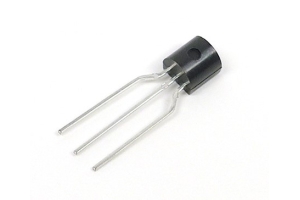
Understanding the KSC1845 Transistor
em 07/11/2024
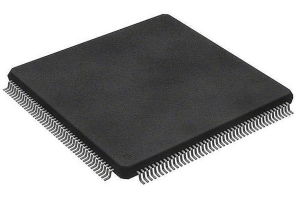
STM32H743IIT6 Microcontroller Overview
em 07/11/2024
Postagens populares
-

O que é GND no circuito?
em 01/01/1970 2915
-

Guia do conector RJ-45: Códigos de cores do conector RJ-45, esquemas de fiação, aplicativos R-J45, folhas de dados RJ-45
em 01/01/1970 2475
-

Tipos de conector de fibra: SC vs LC e LC vs MTP
em 01/01/1970 2064
-
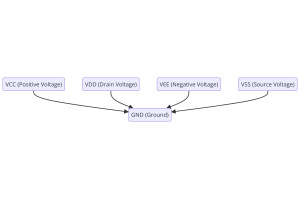
Entendendo tensões da fonte de alimentação em eletrônicos VCC, VDD, VEE, VSS e GND
em 08/11/0400 1854
-

Comparação entre DB9 e RS232
em 01/01/1970 1749
-
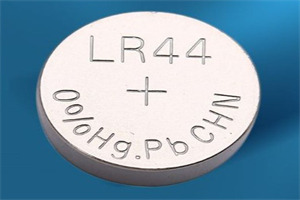
O que é uma bateria LR44?
A eletricidade, essa força onipresente, permeia silenciosamente todos os aspectos de nossas vidas diárias, desde aparelhos triviais até equipamentos médicos com risco de vida, ela desempenha um papel silencioso.No entanto, entender verdadeiramente essa energia, especialmente como armazenar e gerá -la com eficiência, não é uma tarefa fácil.É nesse contexto que este artigo se concentrará ...em 01/01/1970 1702
-

Compreendendo os fundamentos: resistência à indutância e capacitância
Na intrincada dança da engenharia elétrica, um trio de elementos fundamentais leva o centro do palco: indutância, resistência e capacitância.Cada um possui características únicas que ditam os ritmos dinâmicos dos circuitos eletrônicos.Aqui, embarcamos em uma jornada para decifrar as complexidades desses componentes, para descobrir seus papéis distintos e usos práticos dentro da vasta or...em 01/01/1970 1646
-

Guia abrangente da bateria CR2430: Especificações, aplicações e comparação com baterias CR2032
O que é a bateria CR2430?Benefícios das baterias CR2430NormaAplicações de bateria CR2430CR2430 equivalenteCR2430 vs CR2032Tamanho da bateria CR2430O que procurar ao comprar o CR2430 e equivalentesFolha de dados PDFPerguntas frequentes As baterias são o coração de pequenos dispositivos eletrônicos.Entre os muitos tipos disponíveis, as células da moeda desempenham um papel crucial, comumen...em 01/01/1970 1530
-

O que é RF e por que o usamos?
A tecnologia de radiofrequência (RF) é uma parte essencial da comunicação sem fio moderna, permitindo a transmissão de dados em longas distâncias sem conexões físicas.Este artigo investiga o básico da RF, explicando como a radiação eletromagnética (EMR) torna possível a comunicação de RF.Exploraremos os princípios do EMR, a criação e o controle dos sinais de RF e seus usos abrang...em 01/01/1970 1519
-

CR2450 vs CR2032: A bateria pode ser usada?
As baterias de lítio de manganês têm algumas semelhanças com outras baterias de lítio.Alta densidade de energia e vida útil longa são as características que eles têm em comum.Esse tipo de bateria ganhou a confiança e o favor de muitos consumidores por causa de sua segurança única.Gadgets de tecnologia caros?Pequenos aparelhos em nossas casas?Olhe em volta e você os verá em todos os l...em 01/01/1970 1496

